本文由 袈蓝建筑 授权mooool发表,欢迎转发,禁止以mooool编辑版本转载。
Thanks SYN Architects for authorizing the publication of the project on mooool. Text description provided by SYN Architects.
袈蓝建筑:距离北京一百多公里、石家庄两百多公里,坐落在太行山脚下、易水湖畔,河北保定市易县的村庄在两年的时间中经历着巨变:142平方公里的山水成为一个“建筑试验场”,频频有新项目动工;与此同时,艺术于乡野间播种、扎根、生长。一个原生态古村落正在为“古朴”融入时尚、艺术,它距城市不远、离生活更近。田岗村,一座圆形的美术馆,正是这一切变革的“引线”。
SYN Architects: The project, located over 100 kilometers from Beijing and more than 200 kilometers away from Shijiazhuang, lies at the foot of Taihang Mountain, and adjacent to Yishui Lake. The village in Yi County of Baoding City, Hebei Province has undergone tremendous change during the past two years: 142 square kilometers of land in the area has been allocated for use as a kind of playground for architectural experimentation. Many new creative projects have been initiated, grown, and taken root in the countryside, forming the basis for an innovative eco-village which integrates current trends in art and culture with the simplicity of traditional country life. It is not far from the city, and encourages an active and engaged way of living. Tiangang Village, a circular-shaped art museum, is the leading example for the changes which are taking place in the area.
▼项目视频 Video
01.做好「土壤」|Nourishing the “Soil”
2019年,隆基泰和集团旗下文化、旅游、商业三线重组,圆歌文商旅集团(下称“圆歌”)正式成立,圆歌易水湖文旅(含田岗·知行村)项目进入筹划期。同年,袈蓝建筑受邀加入,担纲规划、建筑设计、运营等各项工作。彼时,开发商及规划、设计团队所面对的场域亟待一场救赎,田岗村则成为救赎的第一步。
In 2019, the three aspects of culture, tourism, and commerce under the Longjitaihe Group Limited were reorganized, and the IVYONE GROUP was formally established, and the IVYONE Yishui Lake Cultural Tourism project (which included Tiangang·Zhixing Village) entered the planning phase. During the same year, SYN Architects was invited to join, taking charge of planning, architectural design, space operation and other related responsibilities. At the time, the site confronted by developers and the planning and design team was in dire need of revitalization, and creating Tiangang Village became the first step towards bringing new ideas and energy to the area.
▼项目鸟瞰 Aerial view
面临交通闭塞、基础条件差、群众观念保守、劳动力文化水平普遍偏低等各种问题,让易县深山区中的田岗村虽环山临水,坐拥秀美风光和深厚、悠久、独具特色的民俗文化(武术会、九曲黄河灯会等),却常年无计致富,2013年曾被列入省级扶贫开放重点村。幸得2016年河北省首届旅发大会和产业扶贫的东风拂过,田岗村的基础设施得到改善、特色产业初见端倪,却因缺少健全的产业、资金、人才链条而无法形成规模化经济势能。
Tiangang Village lies deep in the mountainous region of Yi County, with abundant beautiful scenery of tall peaks and rivers, and a heritage of uniquely profound, long-standing folk culture (martial arts society, the Jiuqu Yellow River Lantern Festival, among others). However, the area has faced various challenges such as traffic congestion, poor basic living conditions, conservative attitudes of the local population, and a general lack of skilled labor. Attracting money and investment to the area throughout the calendar year has proven to be difficult, so in 2013, it was designated a key village for poverty alleviation and opening up by the province. Following that, The First Conference of Hebei Tourism Industry Development took place in 2016, and the policies for reducing poverty began to take effect. The infrastructure of Tiangang Village had been improved, and featured industries began to move in. However, due to the lack of a sound industry, capital, and talent chain, the potential for a large-scale economy could not be met.
就像是下一盘围棋,若要连成势,每一颗棋子、每一个阶段都很重要。因已有基础的资产梳理、设施革新,圆歌与袈蓝将首子(知行村)落于田岗村,希望借此形成带动作用,激活易水湖湖西片区的发展,最终形成“联盟村”。而对于常年深耕乡村振兴领域、成功完成过多个城乡项目的袈蓝建筑来说,田岗村是一次机遇。策规划、设计、运营多线并进,继四川德阳旌阳区全域乡村振兴1.0之后,袈蓝在田岗开启并跃迁至全域乡村振兴2.0的崭新阶段,力求“通过知行合一的行动推动人的改变,为乡村带来更多可能”。
An approach has been adopted that can be seen as a metaphor for chess play, where each move is crucial and leads to the next, with the sum of all moves entailing an overall strategy. Keeping the existing foundation of the area’s underlying attributes, infrastructure, and innovations in mind, IVYONE GROUP and SYN Architects set about planting the first seed (Zhixing Village) in Tiangang Village, with the intent of spurring new development in the area west of Yishui Lake, and ultimately creating a village uniquely allied to its surrounding environment. Tiangang Village presented a distinct design opportunity for SYN Architects, which has extensive experience in rural revitalization, and has successfully completed many projects in both rural and urban contexts. Planning, design, and daily operations must all be considered and work together, following the lead of the SYN Rural Revitalization 1.0 ( the village planning made by SYN Architects is based on the development of the whole district or at least the county) initiative in the Jingyang District of Deyang, Sichuan. Moving forward, SYN Architects has begun a transition to the new stage of SYN Rural Revitalization 2.0 in Tiangang, striving to “promote the development of local populations through the unification of knowledge and action. Change brings new possibilities to the village.”
▼新旧对话:生机与希望 Dialogue between old and new: Life and Hope
木无本而不立,而“本”(即,根)受土壤所承托。振兴乡村,需要激发其“内生力”,使之像“木”一样生长。袈蓝进入乡村,从方法论、产业配方、新农人、内生力和解决问题五大维度培育“土壤”,让它变得有厚度、有营养,足以承托产业,为乡村的可持续发展和城乡融合赋能。“反例”就在田岗村,村落首次调整升级时曾建设过一个半圆形的“游客服务中心”:它位于环湖路的重要节点,视野开阔,虽不临湖却游船可达,场域条件相对优越,却因没有游客光顾而空置了三四年。这座“烂尾楼”正是美术馆的前身。
A tree cannot stand without its roots, and the roots in turn are supported by the surrounding soil. To revitalize the countryside, it is necessary to stimulate its inherent “endogenous strength” so that it grows according to its natural tendencies, like wood. SYN Architects approaches the countryside with the intent of cultivating the “soil” of five dimensions: methodology, solutions for industry, new farmers, endogenous strength, and problem solving, so that taken as a whole they fuse together, and provide a path towards contributing to the sustainable development of the countryside. This would also entail a thorough integration of urban and rural areas. The counter-example is the former “Tiangang Village”: when the village was first upgraded, a semi-circular “tourist service center” was built: it is located at an important juncture of Huanhu Road and has a panoramic view of its surroundings. Although it is not near the lake, it can be reached by boat. The general condition of the area is excellent, but it has been largely vacant for the past three to four years due to a lack of tourists. This “unfinished buildi
02.「烂尾」再造 |The Rebirth of an Abandoned Architecture
主持建筑师邹迎晞常用“没头脑和不高兴”来形容国内的乡村振兴状态:带头人“没头脑”、村民“不高兴”,田岗村初期也遇到了此类状况。在全国范围内,大量乡村经历着同样的过程:为了改变乡村面貌,优秀的建筑师建了很多漂亮的房子,却因缺乏“内容”,迅速沦为空置的盒子。所谓的“游客服务中心”便是一种“想当然”的建筑。“谁来、为什么来、来做什么”的基础问题无法得到解决,那建筑究竟是在制造问题,还是解决问题?
基于这些思考,袈蓝在复兴田岗村的过程中决定对设计负责、对运营负责、对内容负责。“知行村”IP被引入田岗:知,即以“做好土壤”为方法论,通过帮扶、激活的方式解决问题;行,即有效地付诸“破冰、松土、播种、浇水”等行动步骤。
Lead architect Zou Yingxi frequently mentions “incapability and disappointment” to describe the phenomenon of rural revitalization in China: the ones in charge were lacking in practical experience and the villagers were unhappy with the result. Tiangang Village also encountered this kind of situation in the early days. And across the country, a large number of villages went through the same process: in their efforts to change the appearance of the countryside, excellent architects have built many beautiful houses, but due to a lack of “context”, they quickly became vacant boxes. The so-called “visitor service center” is a kind of building easily taken for granted. If the basic questions of “who comes, why, and what do they do,” cannot be answered, is the architecture creating or solving problems?
Based on these considerations, SYN Architects decided to take over responsibility for the design, operation, and content of Tiangang Village and the process of its revitalization. The process utilized at Zhixing Village was introduced into Tiangang: using “good soil” as a metaphor and methodology, and solving problems through the principles of assistance and activation; and furthermore taking “breaking ice, loosening soil, sowing, and watering” as guiding precepts.
2019年,圆歌和袈蓝在建设同期驻村陪伴,通过知行合一的行动,推动认知的变革,播种希望,逐步建立起村民、投资者、开发商等所有相关群体对项目的信心、引导其不遗余力地投入。正如邹迎晞所言,“乡村振兴的成功基于‘相信’而非‘算账’”。
In 2019, IVYONE GROUP and SYN Architects temporarily lived in the village in order to oversee the construction process. By uniting their knowledge with action, they encouraged fresh perspectives, thought processes, and hopeful attitudes, gradually gaining the confidence of villagers, investors, developers and other groups involved with the project. By guiding them to invest maximum effort in the project, they were following the words of Zou Yingxi: “The success of rural revitalization is ultimately based on ‘belief’ rather than blaming the former planners”.
2021年4月,圆歌·田岗知行村正式完工,对外开放,“易水三年展”则在此之前便悄悄入驻。两三年间,不间断的艺术家驻留及在地创作让“驻留”本身成为一场艺术活动,艺术表达乡村、带动传播,为知行村播下了希望的种子,足以抗衡“同质化”。
In April 2021, IVYONE GROUP · Tiangang Zhixing Village was officially completed and opened to visitors, while the “Yi Shui Triennial” exhibition had quietly settled in before then. In the past two or three years, the uninterrupted stays of artists in residence and their local creations have associated the notion of “residence” here with cultural activity. Art has the ability to express the countryside’s reality and promote communication, providing a fresh, forward-looking perspective for Zhixing Village, with which the effects of “homogenization” may be counteracted. ”
“日本举办艺术节的成熟模式为我们提供了参考:我们没有把艺术节单纯当作节庆,也没有将艺术馆简化为无表情的空间,它们是引流和产业的抓手,是激活和预热,是营销手段。”邹迎晞带领袈蓝团队陆续引入了咖啡、讲堂、民宿、市集、研学、垂钓、经济作物种植等各类产业及产品,它们与艺术一样零散分布于全村,而往来穿梭的当地人则担当“路标”,这种刻意的分散成为打破城乡隔阂的手段,而在寻觅之中对乡村的沉浸式体验则让人真正放松了被城市绷紧的神经,真正融入当地、融入艺术。不同产业之间并非随意搭配,而是需要进行一定的梳理,并需要有一个先行者,起到示范作用。在知行村,袈蓝咖啡(与袈蓝建筑同属于袈蓝集团)成为第一个介入的产业。
Art festivals held in Japan have been established for some time now, and provide us with a working precedent, where world-renowned art festivals have transformed the countryside and attracted significant economic activity. We did not treat the art festival as a mere festival, nor did we reduce the art gallery to an expressionless space. They are the starting points to ‘drain’ certain elements from the place, and to stand as emblems of industry, in order to start the process of activation and ‘warming up’ for what is to come – in effect, a marketing tool.” Zou Yingxi led the SYN Architect team to successively introduce various industries and products to the overall project such as coffee, lecture halls, guesthouses, public markets, scientific research, fishing, and cultivation of cash crops. They are scattered throughout the village like art installations, and the locals who shuttle back and forth assume the role of directing visitors where to go. This deliberate dispersal has become a means by which to break down the barrier between urban and rural areas. The immersive experience of discovery within the countryside encourages urbanites to relax nerves that have been tightened by the city, and to truly integrate into the local scene and the art that has been produced there. Various industries have been introduced in an ad hoc fashion, but an organizing principle is required – and a major participant is required to take the first step, providing an example for others to follow. In Zhixing Village, SYN Coffee (which is part of the SYN Group, together with SYN Architects) became the first industry to get involved.
“烂尾楼”背后,是“初次振兴”时村干部对建筑和场地的基础梳理,袈蓝以此为条件,因势利导,对其功能转型升级。改造后,建筑装载着艺术馆、酒店、餐饮等复合功能,它区别于传统景区和度假区门户,扮演着艺术家和艺术事件的汇聚地,又与重型投资形成联动。它是艺术振兴乡村的第一步,是易水湖全域的副中心,更是圆歌以乡村振兴为切入点踏足农文旅开发业务的第一步试点……像是投石问路,荡起田岗知行村的第一个漩涡。
Behind the “abandoned architecture” is the first review of the building and site by the village cadres during the “initial revitalization”. SYN Architects took this as a pre-existing condition, analyzing it fully in order to comprehend the site and its situation to better upgrade its functioning. Following the renovation, the building is replete with multiple functions such as art galleries, hotels, and catering services. It is different from traditional scenic spots and resort gateways, acting as a gathering place for artists and art-related events, and is linked with heavy investment in the community. It is a first step to revitalize the countryside through art within the sub-center of Yishui Lake, and is the first pilot project for IVYONE GROUP to set out in the development of cultural projects in the countryside, blending tourism with rural revitalization as the starting point – Tiangang Village is the result of an important effort in finding a viable direction for future development of these kinds of sites.
03.「一笔」而成| “One Stroke”
半圆形的混凝土框架结构在山水之间坐望着田岗村,纷纶的环境、断裂的结构,像是陷入窘境、被迫停滞的乡村。袈蓝拆除部分原有建筑,并为之“续一笔”:一个带状体量沿着半圆内弧盘旋而上,渐次完形,形成看与被看的多重关系;一座连续、无界、圆融的建筑,隐喻着天、地、山、水、人和谐共融的东方自然哲学观,延绵山水、延续文脉,也关联着艺术,并以此链接产业、链接城与乡的脉脉温情。
The original semi-circular concrete frame structure sits amongst the mountains and rivers in the area, facing Tiangang Village. The disorderly initial condition of the site and fractured structure evoked a village in a predicament of forced stagnation. In response, SYN Architects subsequently demolished part of the original building and then “continued” it: a slender orthogonal volume curves and spirals up along the inner arc of a semicircle, gradually completing the shape, creating a variegated relationship between seeing and being seen; a continuous, unbounded, circular architecture of balanced proportions. The building can be seen as a metaphor for the oriental philosophy of nature, where heaven, earth, mountains, water, and people are all harmoniously integrated. It forms an extension to the landscape, furthers the existing cultural context, and is additionally associated with art, which links the area’s industry to the city and warm associations of the countryside.
▼天、地、山、水、人,和谐共融 Heaven, earth, mountains, water and people are in harmony
袈蓝认为,“建筑是景观造景的道具,而景观是建筑的延续。”于是,这个承载着展览功能的建筑体本身也成为一件“大地艺术”作品。建筑主体选用白色颗粒涂料,保持色的纯粹,配合无方向性的纯粹几何形态,成为日光的捕捉器。雕塑般的建筑与稻田和村落结合,建立起建筑与自然场域的强联系,使其借力环境而无限放大张力。
SYN Architects believes that “architecture is a means to shape the landscape, and landscape is a continuation of architecture.” Hence, this building that carries out the function of holding exhibitions can itself be seen as a work of “land art”. The main body of the building is coated with white granular paint to maintain a purity of color – and with its clean geometric form and absence of linear directionality, it becomes a kind of enormous sunlight-catching object. The building’s sculptural presence is combined with nearby rice fields and villages, establishing a strong visceral connection between the building and the natural environment, enabling it to leverage its surroundings to amplify the aesthetic tension between the two entities.
▼建筑成为大地艺术作品 Buildings become works of earth art
建筑,是袈蓝以“解决问题”为核心推导而成的产物:原始建筑体的半弧面向河滩与远山,故将14间客房设于其中,拥抱私密宁静的景色;面向村落和主路的一侧是建筑与场地的交界点,故平行于道路设接待、餐饮等公共空间,并在中部预留大面积的圆形展厅。
The resultant architecture is the product of SYN Architects’s core problem-solving approach: the half arc of the original building faces the river’s shore and distant mountains, so 14 guest rooms are set within it, opening up to the private and tranquil scenery. The side facing the village and the main road is the primary interface between the building and the site, so public spaces such as reception and catering have been set parallel to the road, while a large circular exhibition hall is placed in the middle of the volume.
▼圆形展厅 Circular exhibition hall
为满足不同布展需求的艺术品,建筑需要“变化多端”,于是展厅、盘道、屋顶露台、廊道、建筑外环境等多样化的展场被“一笔漩涡”串联在一起,实现了墙面与天面不同维度的转换,也让建筑的“第六立面”得到高效利用;艺术展览需要与窗外的市井保持距离,于是部分外墙选用U型玻璃,它有限度地容忍自然光线的进入,又能隔开视线,让窗外景色变得朦胧、含蓄,又在夜晚时分透出灯光,让建筑仿若悬空的漩涡,增一重超现实的想象……
In order to accommodate and display different kinds of art, the architecture must be adaptable according to the needs of each exhibition. So the exhibition hall, winding road, roof terrace, corridors, and external areas of the building are spatially connected through the form of a “swirl vortex”, providing a variety of spaces of various dimensions. Each one evokes a unique relationship between wall and the roof, transforming as one moves from one to the other, and allows the building’s roof to be used imaginatively and efficiently. Art exhibitions generally require some separation from the adjacent market outside, so U-shaped obscured glass is utilized for a portion of the outer walls, allowing the entry of natural light, while blocking the line of sight and rendering the scenery outside indistinct. These walls emit a warm, uniform glow when the building is illuminated from within at night, lending the building an appearance akin to a kind of surreal vortex suspended in the sky.
▼光影游戏 Light and shadow play
一座艺术馆中的酒店、酒店中的艺术馆由此成型。客房因不断更迭的艺术品而更具有价值,展厅亦因酒店、餐厅的配套而具备接待和服务的综合效应。袈蓝将“可持续性”贯穿于项目的始末,它涵括产业的可持续、城市访客“消费时间”的可持续等,当然涵括物质空间的“可持续性”。
The effect of a hotel within an art gallery, and an art gallery within a hotel has been created here. The guest rooms have increased value due to their relationship to the constantly changing artworks, while the exhibition halls benefit from having extra reception and service due to the supporting facilities of the hotel and restaurant. SYN Architects has embedded a sustainability concept throughout the project from the very beginning. It includes amongst others, sustainability of industry, sustainability of the “consumption time” of urban visitors, and of course, the sustainability of the physical space from which the architecture is composed.
04. 揭露「本质」| Revealing the “essence”
从场地进入建筑,顺应曲线的走势,空间体验不断发生变化:穿过建筑入口处的巨大挑檐进入空间,绕过重重立柱,觅得“漩涡”的起点,此为空间的第一重惊喜;
As visitors arrive at the Art Center at ground level and follow the path of the curve, their experience of the space is constantly changing: first passing beneath the large cantilevered canopy at the entrance of the building, bypassing the columns, then reaching the starting point of the “vortex”. This is the first surprise of the space;
▼穿过入口巨大挑檐,寻觅第一重惊喜 Through the huge eaves of the entrance, looking for the first surprise
顺应坡道攀升,建筑在“内与外”之间保持一种暧昧,约束出观看风景与展品的多维视角,此为第二重惊喜;
as the ramp climbs, the building maintains a spatial ambiguity between inside and outside, restricting certain perspectives of the surrounding landscape and focusing attention towards multiple shifting views of the exhibits. The second surprise becomes apparent after reaching the top of the ramp.
▼沿着坡道攀升,约束出第二重惊喜 Climb the ramp and constrain the second surprise
完成盘旋,在最高处挑空的观景台环视守望田岗村,见证他的旧貌新颜,又在行进的过程中作为存在者,成为建筑之外的人关注的焦点,此为终极惊喜。
As visitors come upon an open-air viewing platform at the highest point of the building, from which they may observe the scenery surrounding Tiangang Village – both its traditional face and new developments. And, in the process of walking to the highest level of the Art Center, the observers there in turn become the focus of attention for people outside the building, which becomes the final surprise.
这种经由许多阶次,厚积而勃发的瞬时体验正如佛家的“顿悟”,袈蓝为模糊的、无组织状态的田岗村,构建一个有意义、有结构、治理有效的“知行村”,这种“知觉的重组”亦重塑着顿悟的“土壤”。
This type of experience, where an instantaneous realization is made following an accumulated process of passage through many levels is analogous to the “epiphany” spoken of in Buddhism. SYN Architects has attempted to take the vague and disorganized form of the initial project here, and transformed Tiangang Village into a meaningful, structured, and effective place of “knowledge and action”. This “reorganization of perception” also encompasses reshaping the “soil” of discovery and insight.
▼建筑框景,自然入画 Architectural frame scenery, natural painting
袈蓝在原始建筑的混凝土结构基础上混搭了钢结构,让主立面逐渐扭转,向外、向上倾斜,完成了由挑檐向墙体的转变,原有的标准柱网显然无法适应新的荷载和功能需求。建筑师为结构赋予唯美性,在满足力学要求的前提下让柱子呈现出相对无序的状态,像是自然生长的丛林,这近乎成为整栋建筑唯一的装饰。
Taking the concrete structure of the original building as a base to be extended and augmented, SYN Architects has added a new steel structure, allowing the main façade to gradually twist and tilt outwards and upwards, transforming from walls to eaves. The original building’s network of columns is not able to support the load requirements of the new architecture, so additional columns and a new structural system have been introduced. SYN Architects has taken this necessity of engineering and given the new organization of columns an aesthetic quality – while satisfying the requirements of bearing the new load, the pillars appear to be scattered within the space somewhat randomly, like a naturally growing jungle, which ultimately has become virtually the only ‘decoration’ within the entire building.
“美术馆重要的不是装修,而是展品。”邹迎晞希望能够暴露空间的“本质”,回归原汁原味的“田园感”。
“The art pieces within an art gallery have more importance and meaning than the gallery’s interior decoration”. Zou Yingxi seeks to express the “essence” of the Art Center’s space by evoking the original atmosphere of the bucolic countryside in which it exists.
主入口,混凝土地面被掀开、卷曲成签到台,露出草皮,揭示乡村的“田园本质”;餐饮空间,除去长短错落的无序木柱外,天花露明,像是掀开墙皮,露出底色,揭示建筑的“结构本质”。
At the main entrance, the concrete floor has been lifted and curled to form a sign-in desk, while ‘exposing’ grass in its place, a signifying echo of the natural surroundings. In the dining space, the ceiling is exposed, with the exception of suspended timber stanchions of varied lengths, as if the ceiling panels have been lifted to expose the background color and reveal the building’s structure.
▼餐饮空间 The dining space
除此之外,室内空间中以木材、水泥两种主要材料统一了不同功能空间的视觉语言,对话着窗外的乡野与山林,让建筑在保持朴素之美的同时充满温度和细腻的触感。实现田园感的空间离不开“自然材料”的运用,而光线也是“自然材料”的一种。屋面的采光天窗均匀地照亮室内,形成了丰富的光影效果,空间便如“日晷”,自在与时间相拥。
In addition, the two main materials used for the interior, timber and concrete, unify the visual language of various functional spaces, and create a dialogue with the countryside and mountains visible through the windows. This allows the building to maintain a coherent beauty through simplicity of form and material, while still offering depth and richness in visual and tactile experience. The use of natural materials is essential in a space evoking an idyllic, pastoral atmosphere – and light itself is also a kind of natural material. The building’s curved skylight provides even illumination throughout the main spaces, generating rich light and shadow effects throughout the day, lending the building a kind of sundial effect, enacting an easy embrace of the passage of time.
▼客房空间 Guest room space
当时间被引入空间,艺术中心便成为一种生活的剧场,一个艺术家、游客、原住民精神上共同的桃花源。艺术中心及周边建筑群落成之后,村民眼中一群“奇怪却漂亮的建筑、艺术品”为整个村子带来了源源不断的“外来”艺术家、游客和投资人,知行村开始了属于它的热闹。这里自然景观优越,再加上有建筑和运营模式的介入,可以成为北京周边的度假圣地。
With the element of time having been introduced into the space, the Art Center has become a kind of theater of life, a shared spiritual source of inspiration and communication for artists, tourists, and indigenous people. Following its establishment, the Art Center and the surrounding buildings have left a “bizzare but beautiful” impression in the eyes of the local villagers – and have attracted a steady stream of curious artists, tourists and investors, so that Zhixing Village has established a new identity as a place of lively activity. The natural landscape here is exceptional, and with the added appeal of new architecture and a fresh model of operation, it can surely become a resort destination within easy reach of Beijing.
▼生活剧场 Live theatre
▼一层平面图 Plan 1st
▼二层平面图 Plan 2nd
项目名称:田岗艺术中心
地点:中国,河北省,保定市,易县,田岗村
业主:圆歌文商旅集团
投资方:圆歌文商旅集团
项目类型:建筑设计、景观设计、室内设计
设计周期:2020.02-2020.08
施工周期:2020.09-2021.04
场地面积:2736.81㎡
建筑面积:2586.95㎡
室内面积:2586.95㎡
容积率:0.95
绿化率:23%
项目功能:艺术馆+酒店
项目组成员
主创建筑师:邹迎晞
项目建筑师:高博、金楠、蒋志华、陈士方、田亚红、王子强
室内设计师团队:夏福强、何敏、曹真真、钱国兴、刘婷婷、李倩茜、冯炎、郭萌佳、李辉
景观设计师团队:徐璐、李贝贝、张俊超、刘爽、梁景琪、石青青
软装设计团队:束坤、谷悦诚
施工单位:中外建华诚工程技术集团有限公司
结构顾问:北京中和建城建筑工程设计有限公司-卢理杰团队
照明顾问:颐可光照明设计(上海)有限公司
造价:2000万人民币
材料及厂家:竹木—上海摩索新型装饰材料有限公司
U型玻璃—沙河市龙龙玻璃制品有限公司
白色颗粒弹性漆—广东德普威涂料有限公司
摄影:郑焰
摄像:花生工作室
Project Name: Tiangang Art Center
Location: Tiangang Village, Yi County, Baoding City, Hebei Province, China
Owner: IVYONE GROUP
Investor: IVYONE GROUP
Project Type: architectural design, landscape design, interior design
Design Period: 2020.02-2020.08
Construction Period: 2020.09-2021.04
Site Area: 2736.81 square meters
Building Area: 2586.95 square meters
Indoor Area: 2586.95 square meters
Floor Area Ratio: 0.95
Greening Rate: 23%
Project Function: Art gallery + Hotel
Project Team Members
Lead Architect: Zou Yingxi
Project Architects: Gao Bo, Jin Nan, Jiang Zhihua, Chen Shifang, Tian Yahong, Wang Ziqiang
Interior Design Team: Xia Fuqiang, He Min, Cao Zhenzhen, Qian Guoxing, Liu Tingting, Li Qianxi, Feng Yan, Guo Mengjia, Li Hui
Landscape Architecture Team: Xu Lu, Li Beibei, Zhang Junchao, Liu Shuang, Liang Jingqi, Shi Qingqing
Soft Decoration Design Team: Shu Kun, Gu Yuecheng
Construction: HCCI Urban Architectural Planning and Design Co., Ltd.
Structural Consultant: Beijing Zhonghe Jiancheng Architectural Engineering Design Co., Ltd.-Team Lu Lijie
Lighting Consultant: Eastco Lighting Design (Shanghai) Co., Ltd.
Cost: 20 Million RMB
Material and Manufacturers:
Bamboo and Wood—Shanghai Moso New Decorative Materials Co., Ltd.
U-Shaped Glass—Shahe Longlong Glass Products Co., Ltd.
White Granular Elastic Paint—Guangdong DPV Coating Co., Ltd.
Photography: Zheng Yan
Video: Huasheng Studio
“ 雕塑般的建筑与自然场域的联系,能够释放巨大潜力。”
审稿编辑:王琪 -Maggie
更多read more about: 袈蓝建筑 SYN Architects


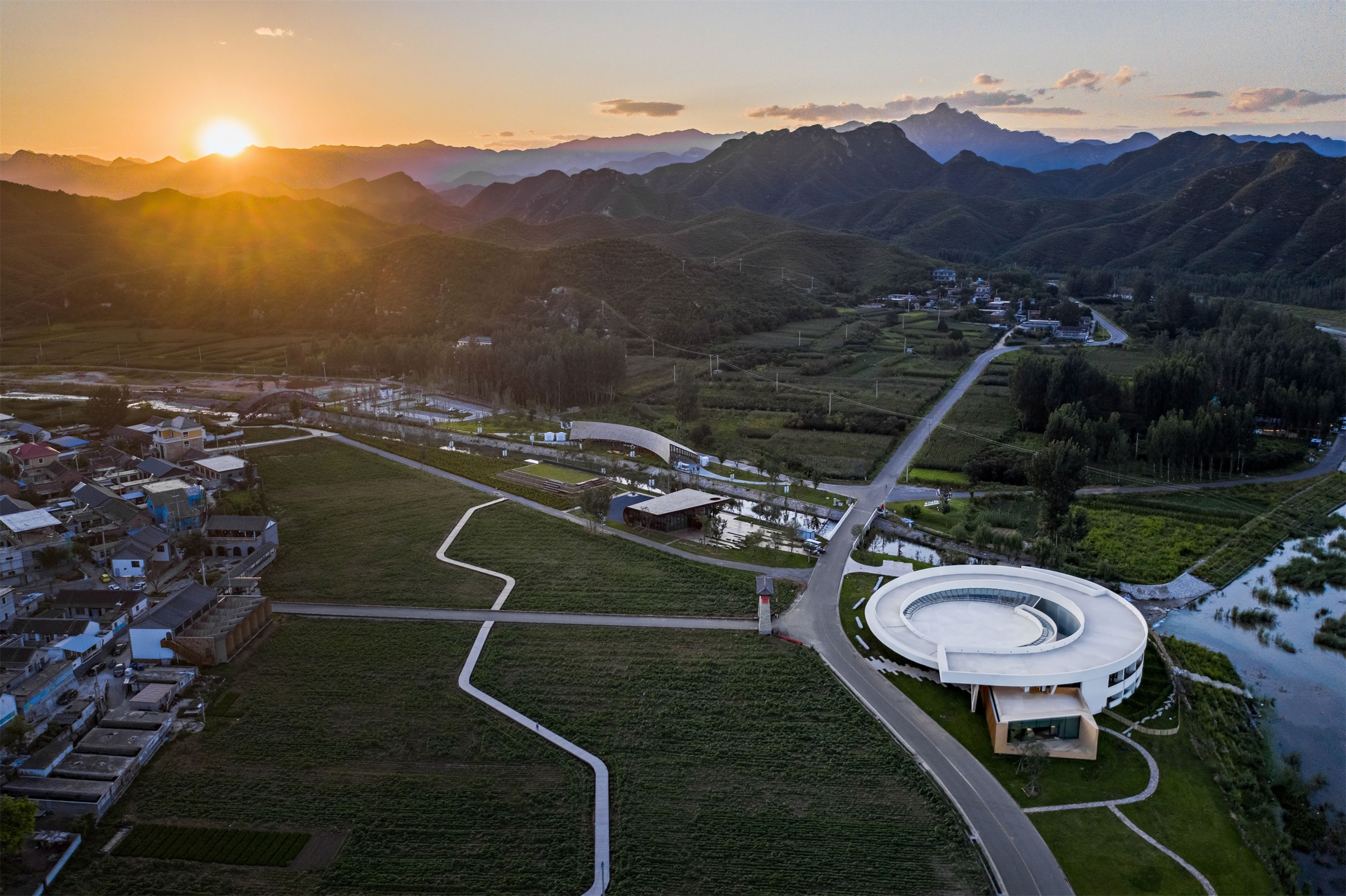
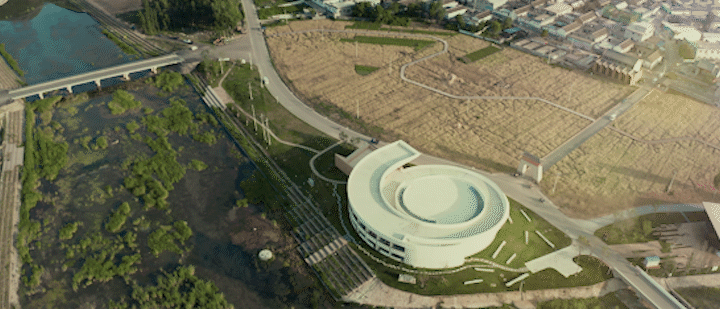


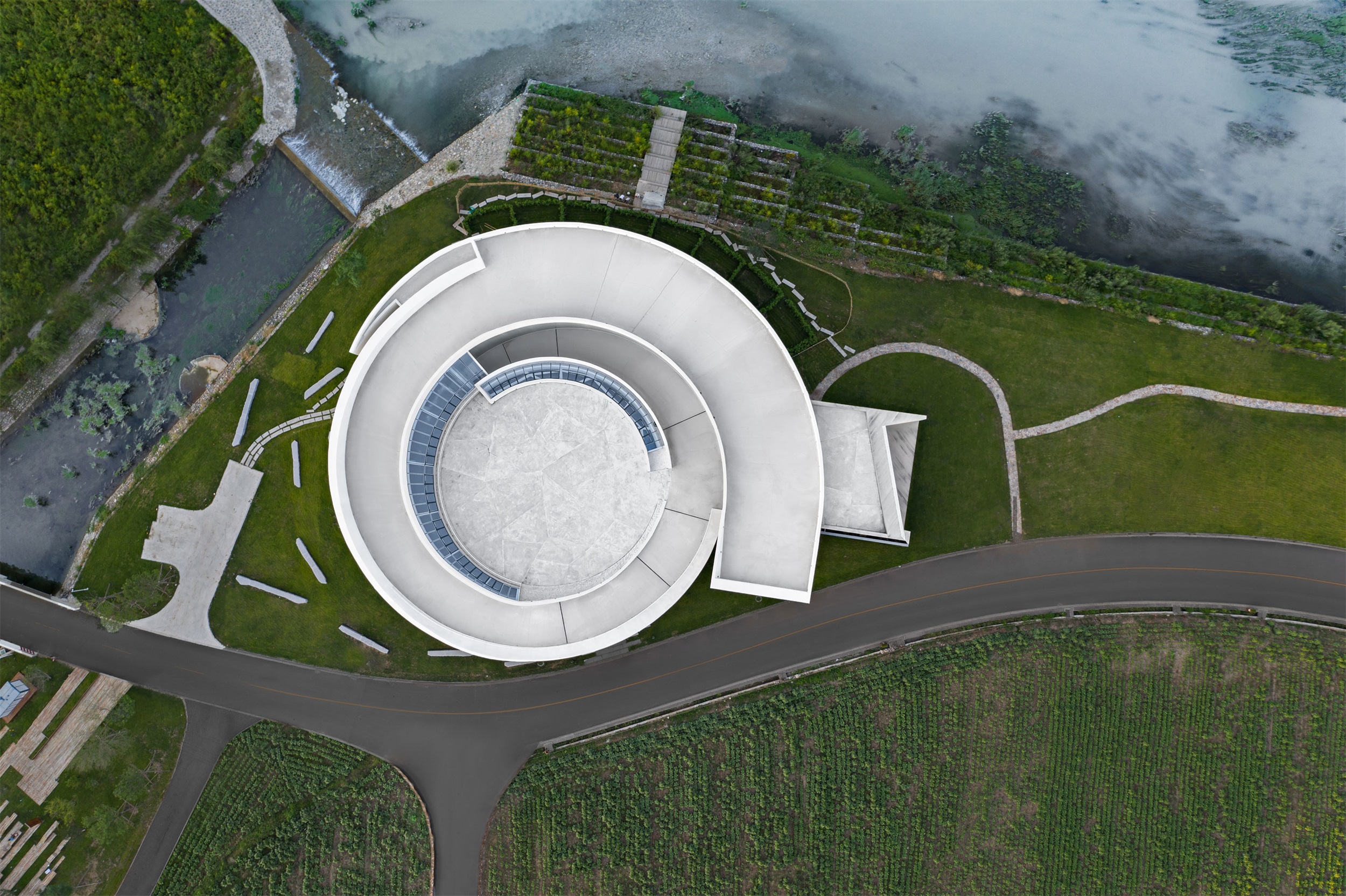


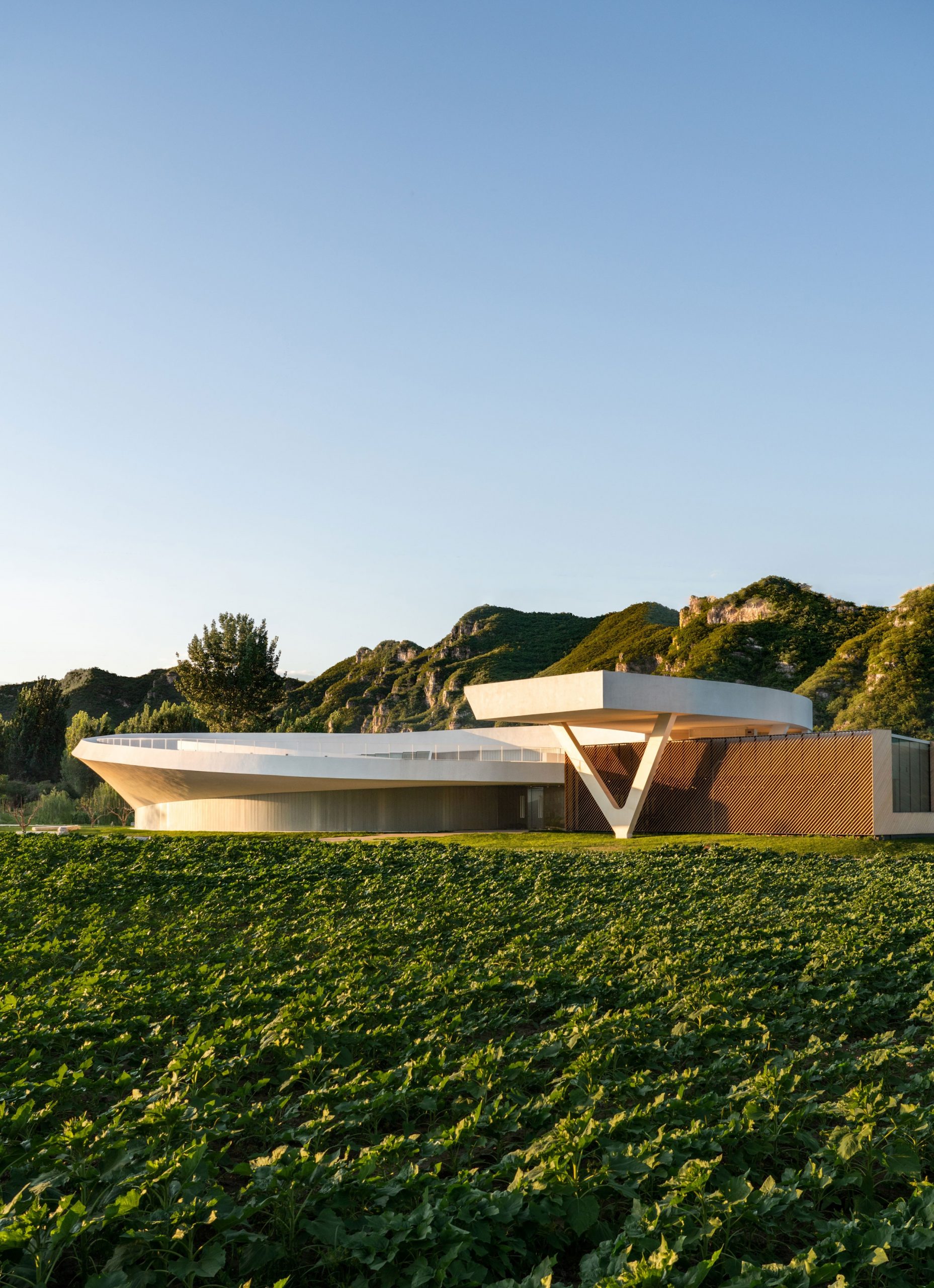
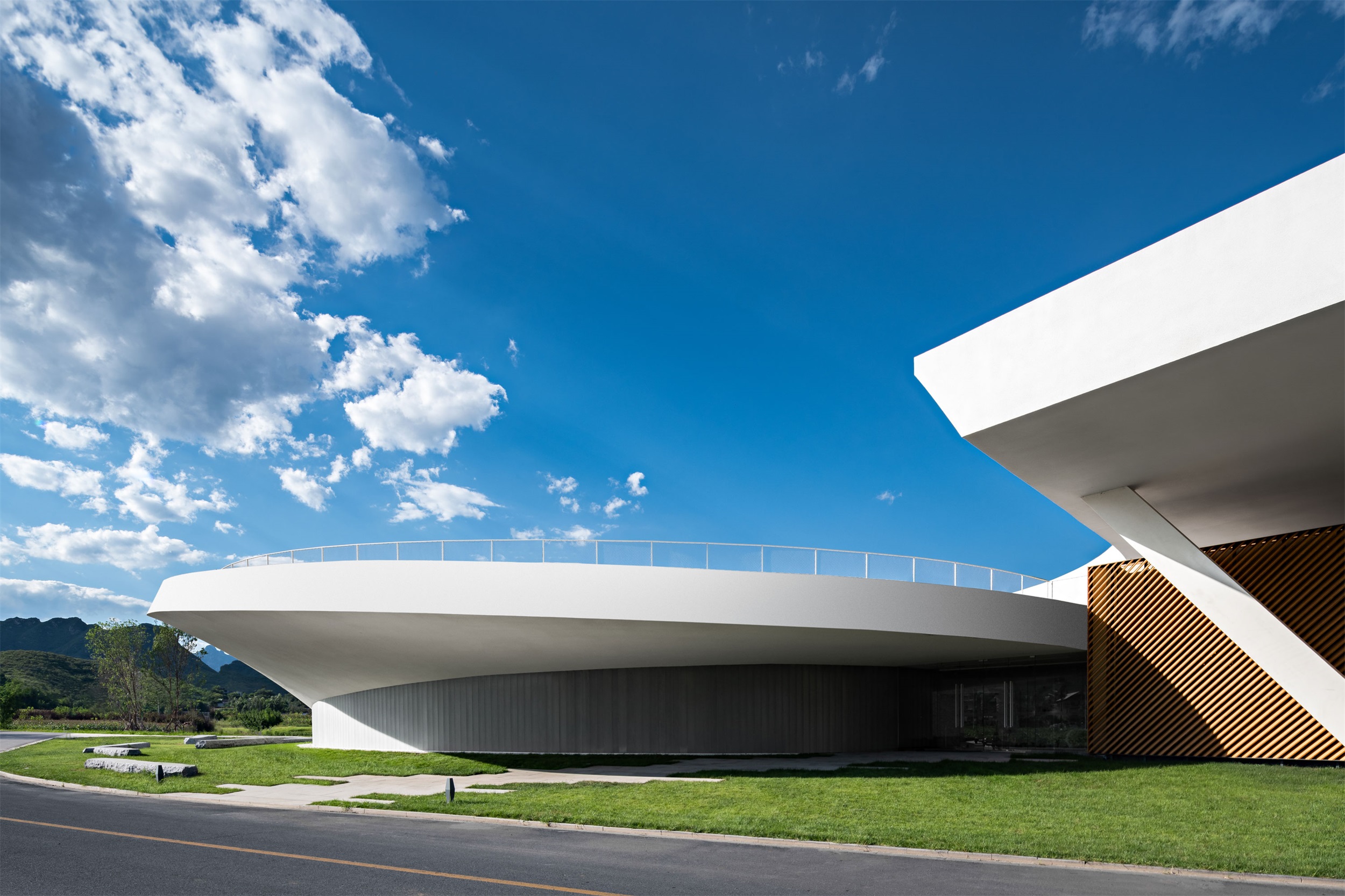

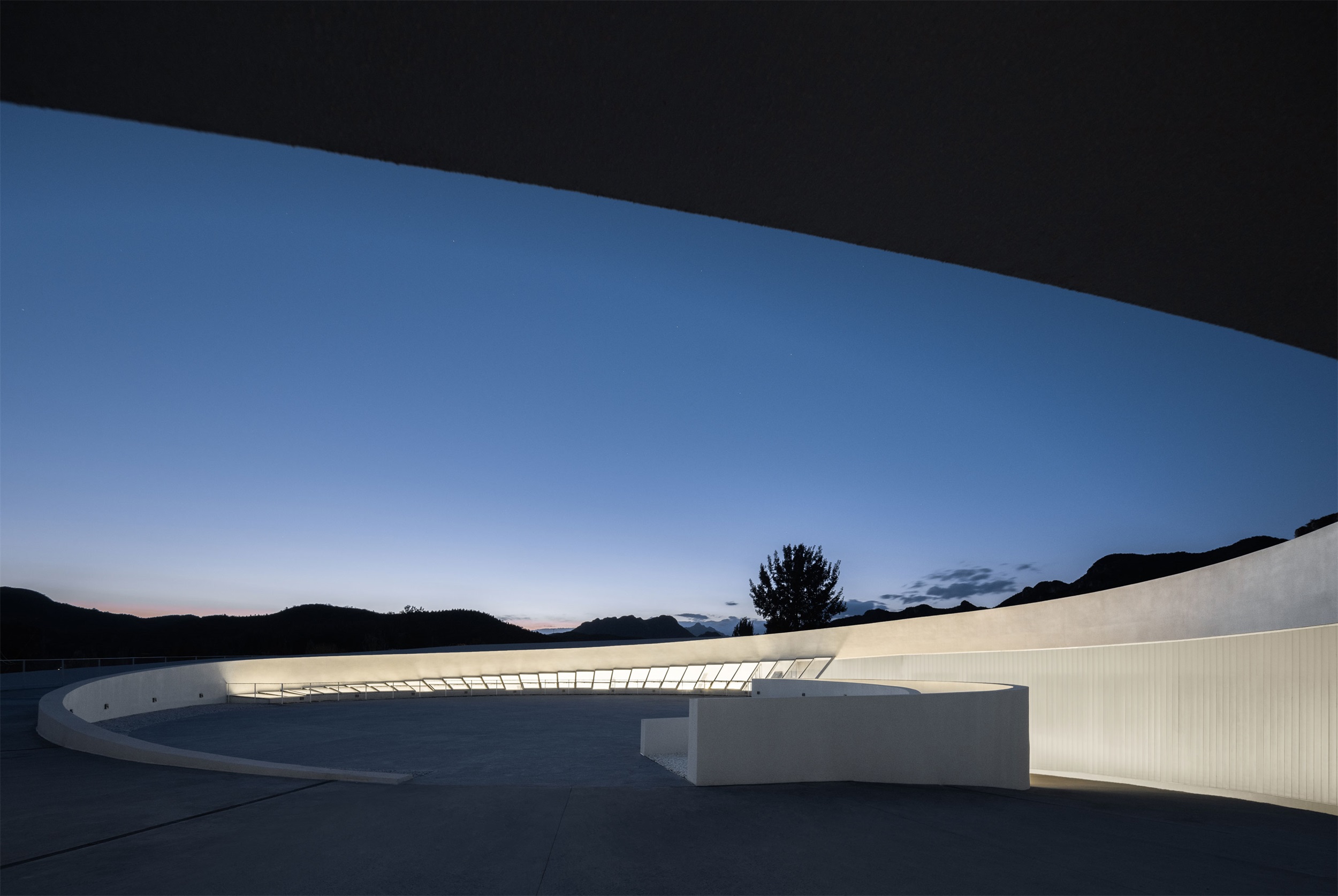


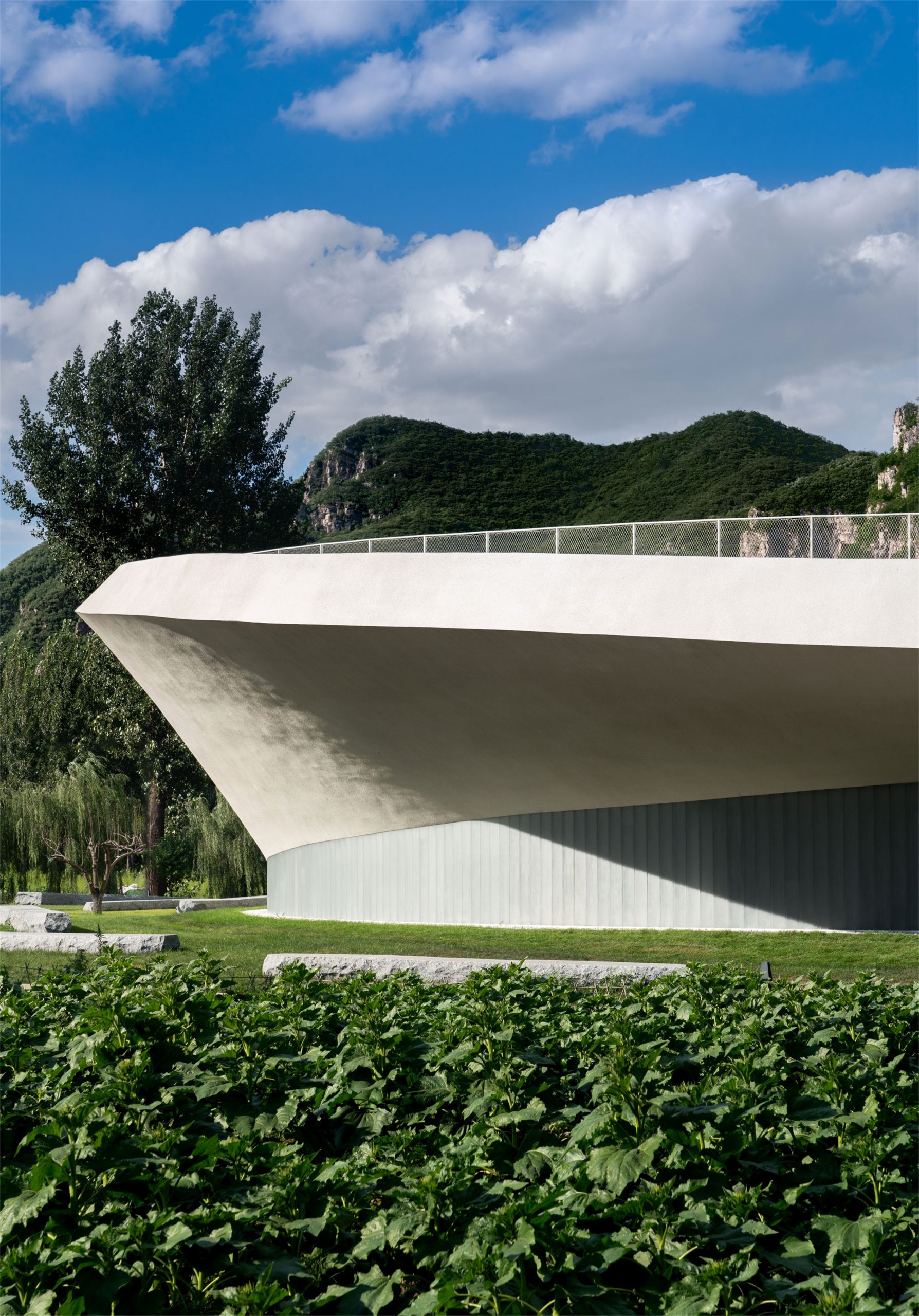

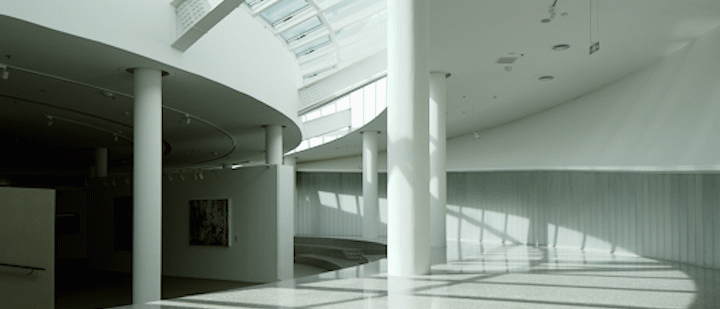
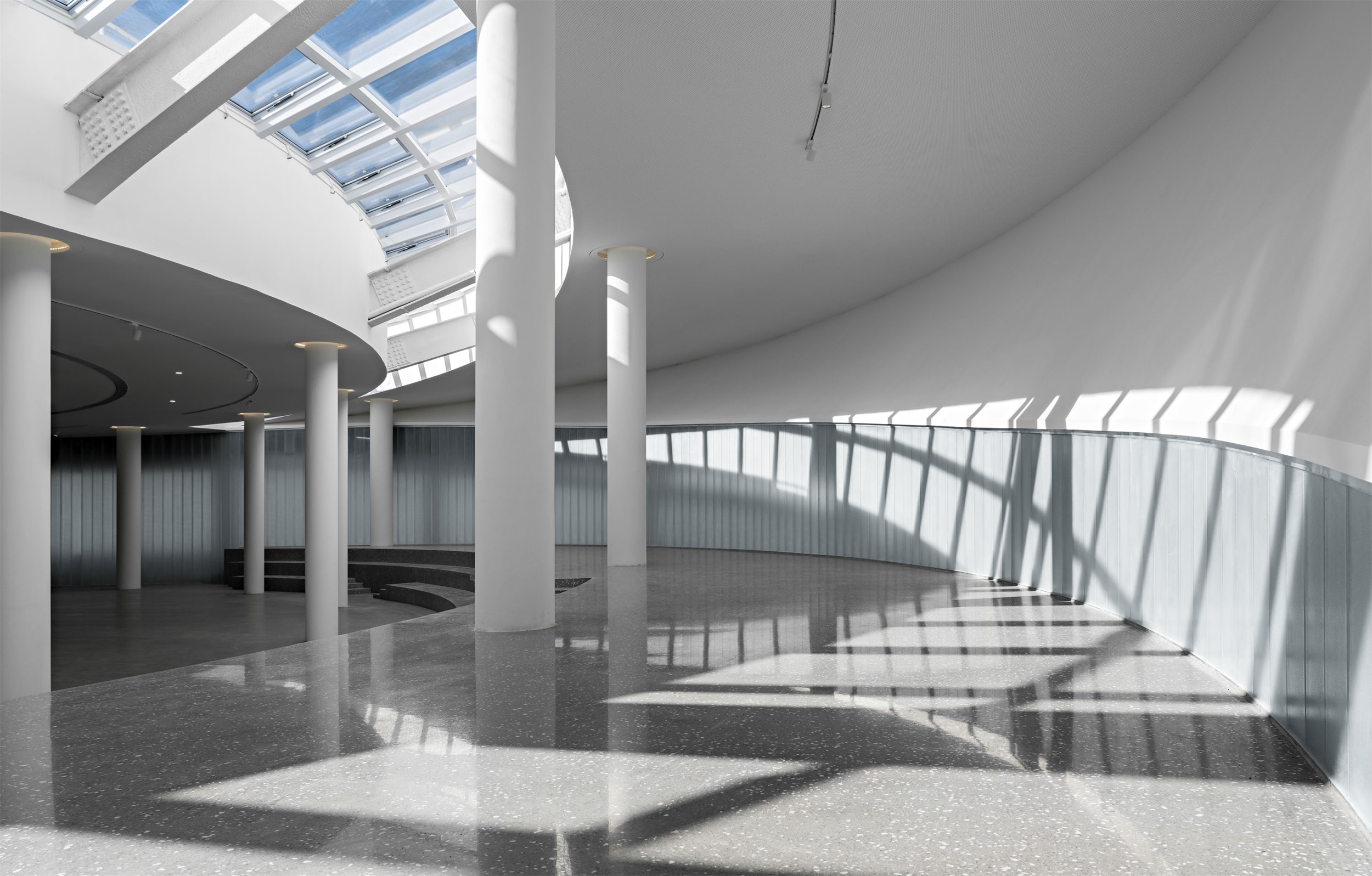
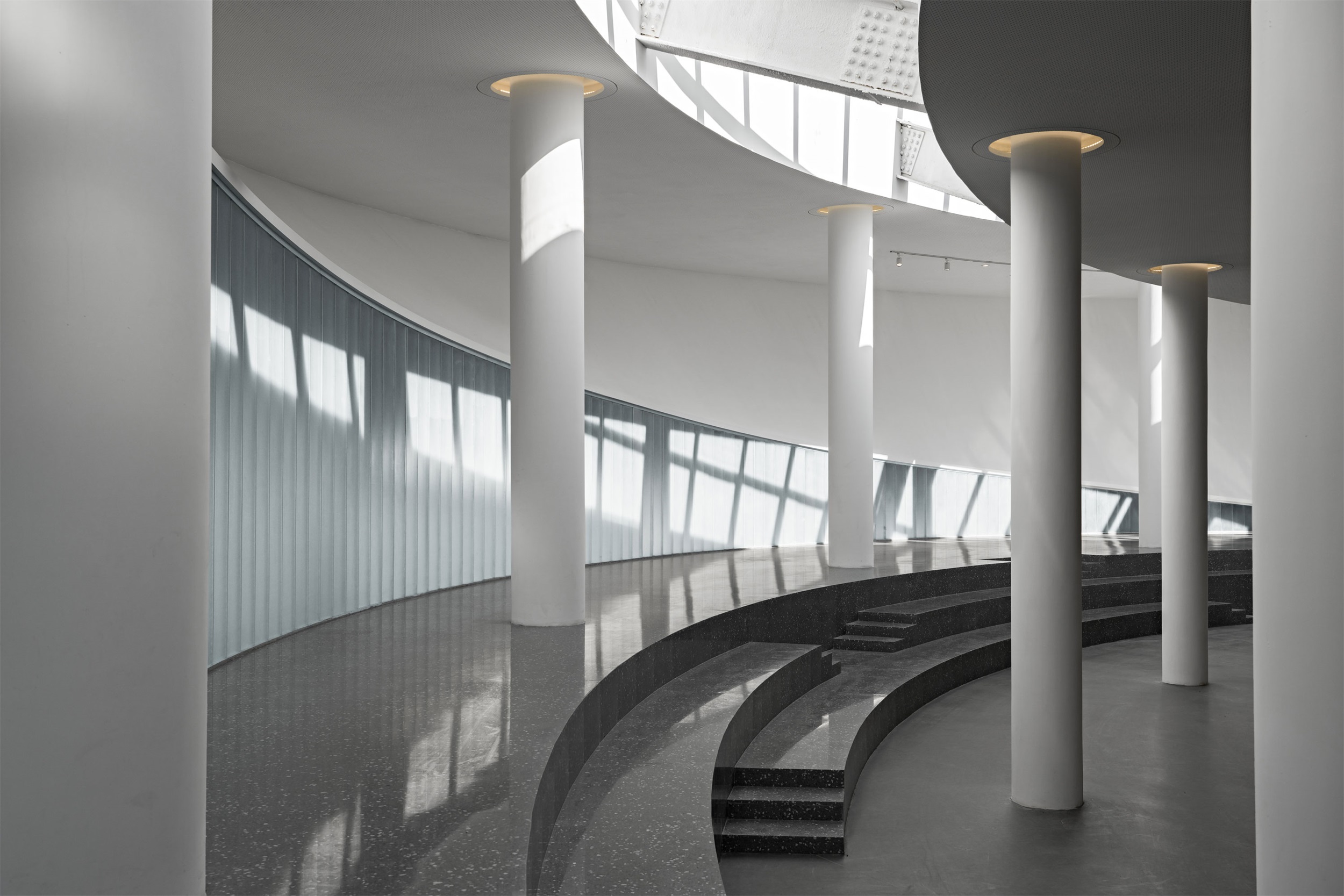

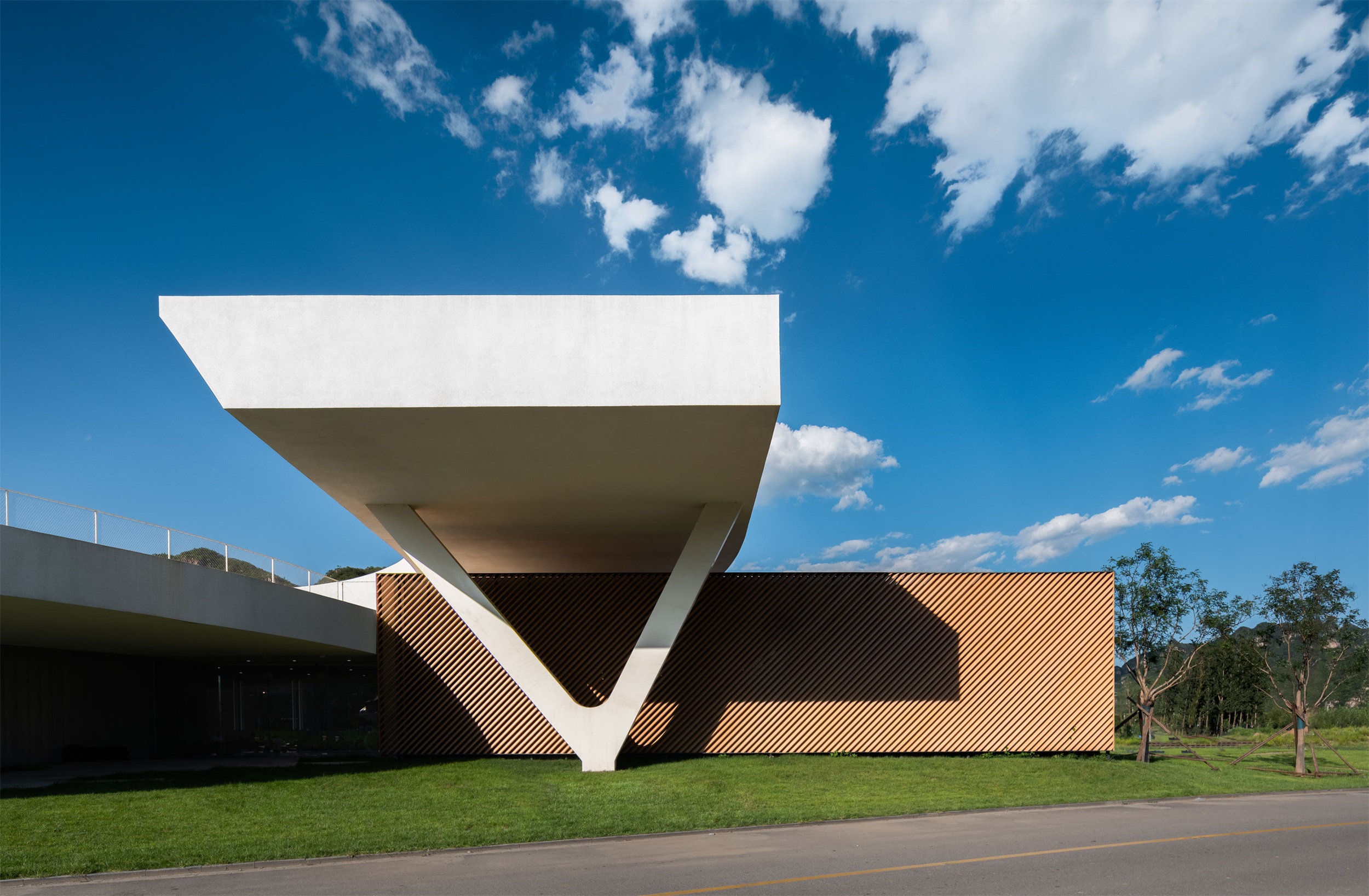



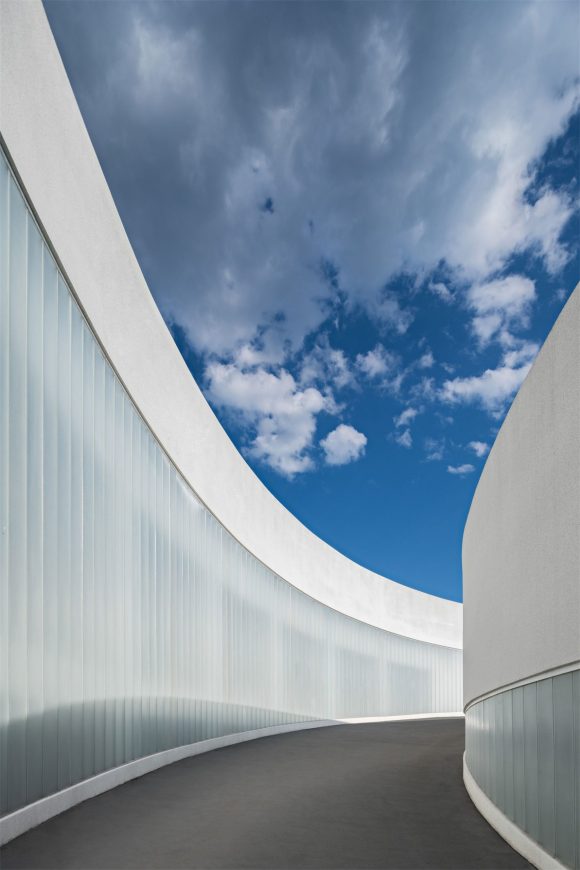
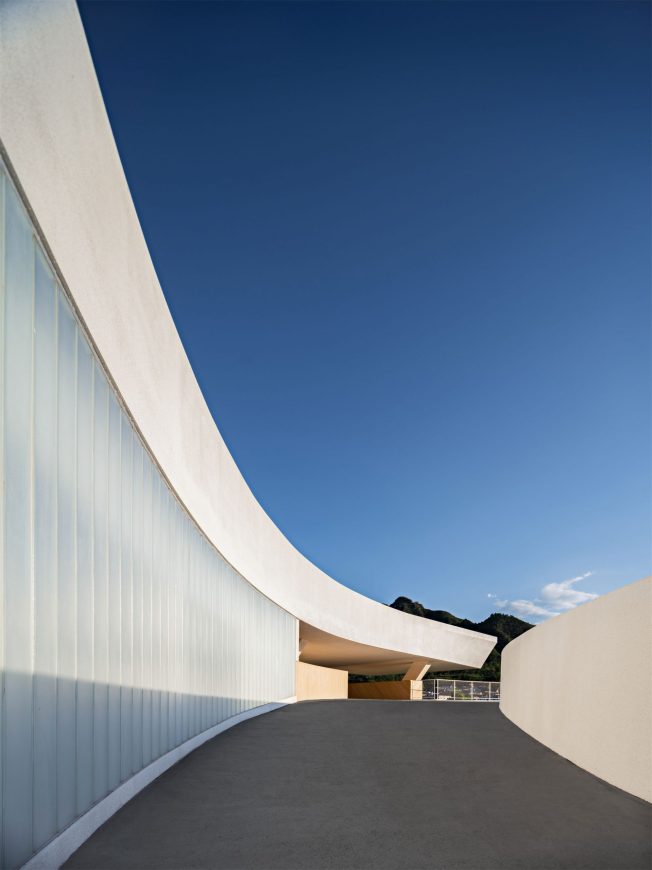
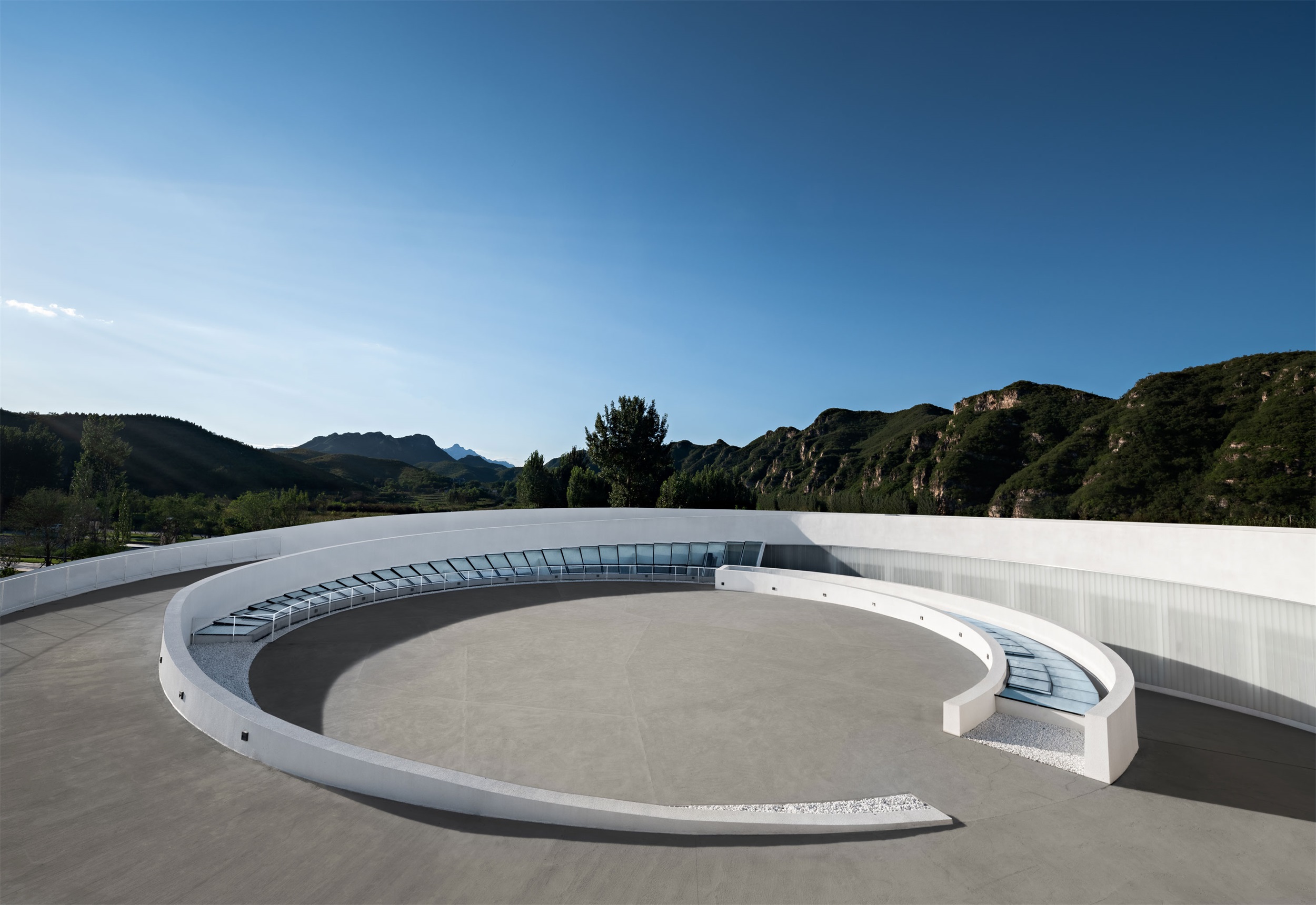

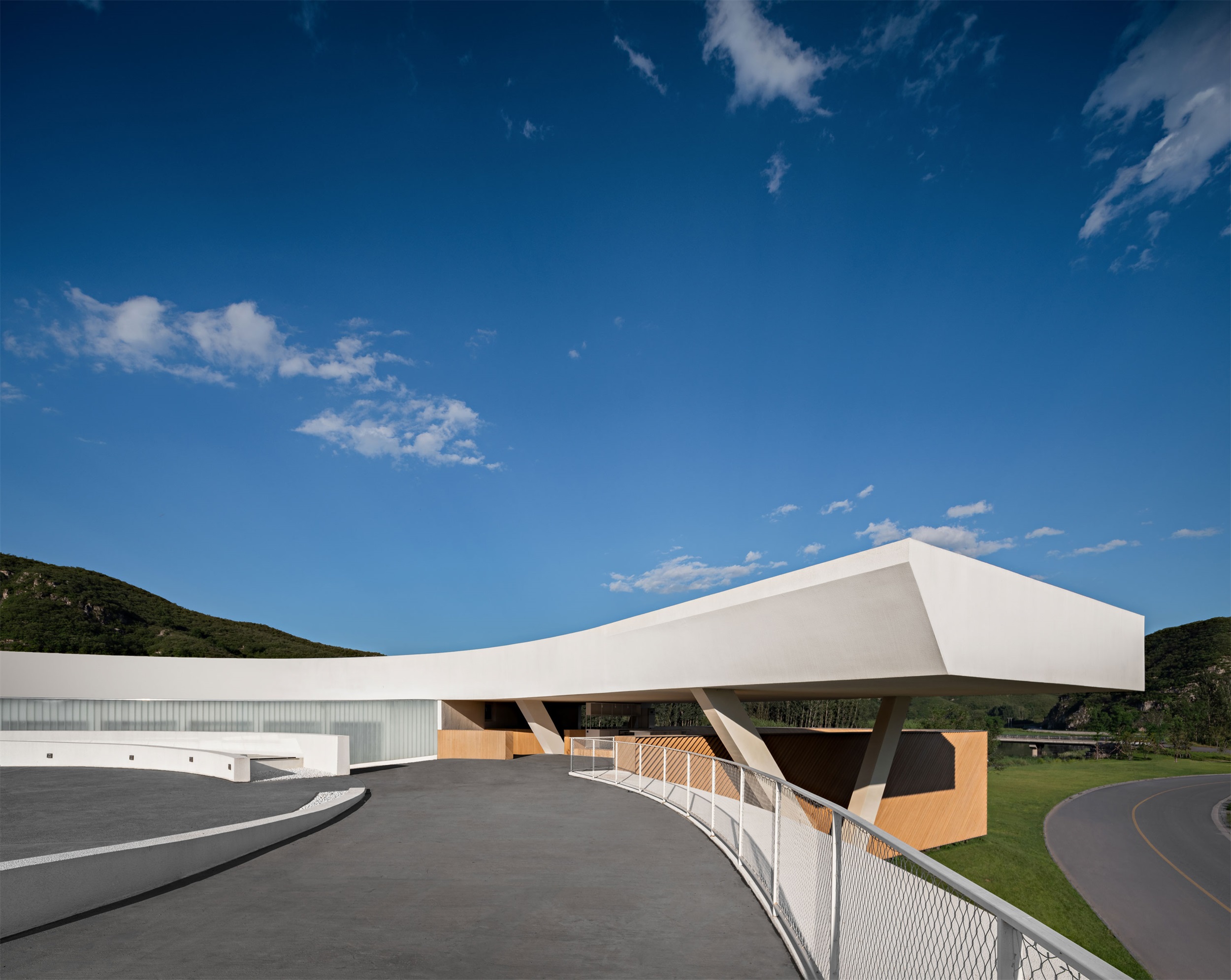

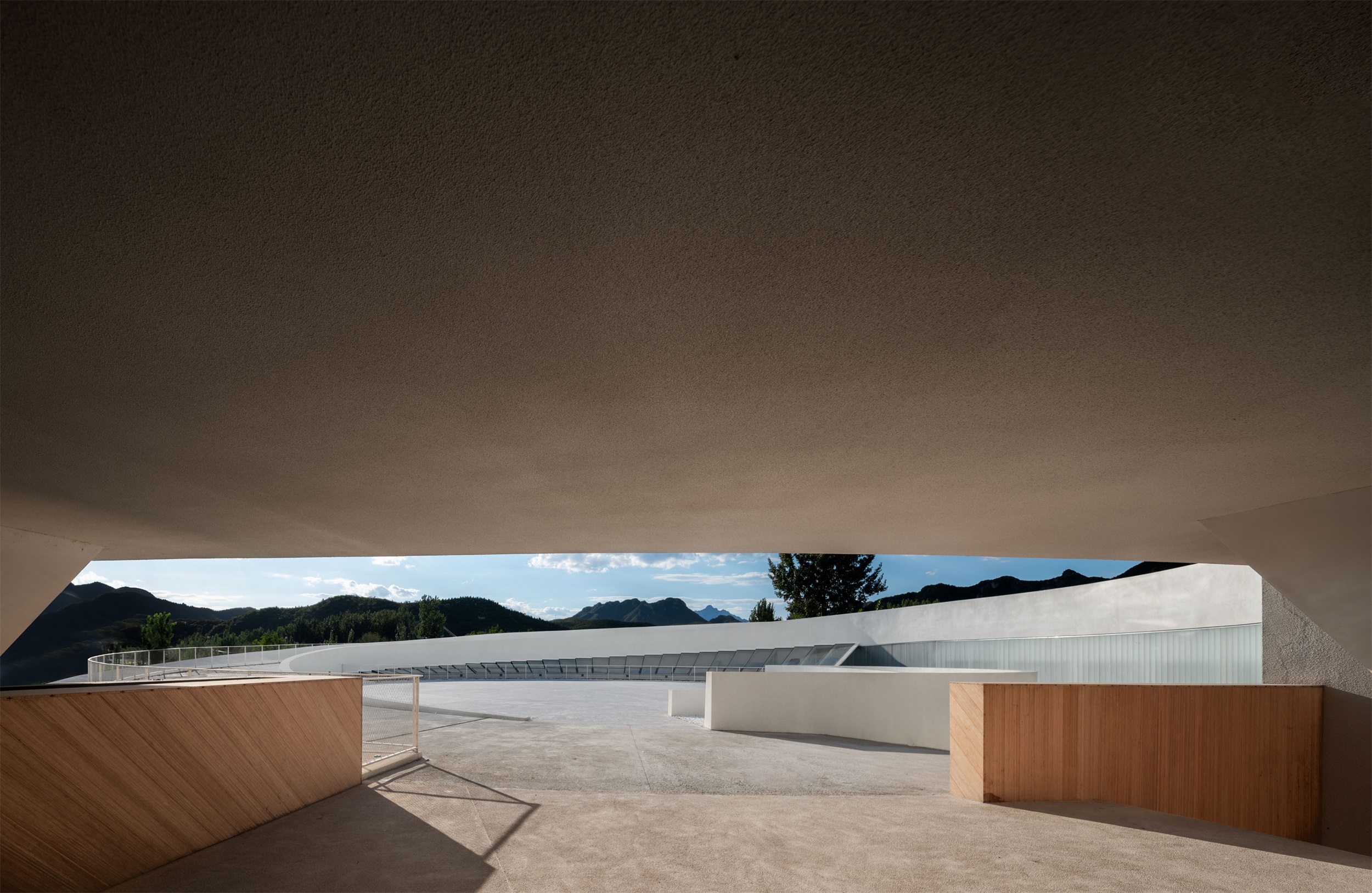
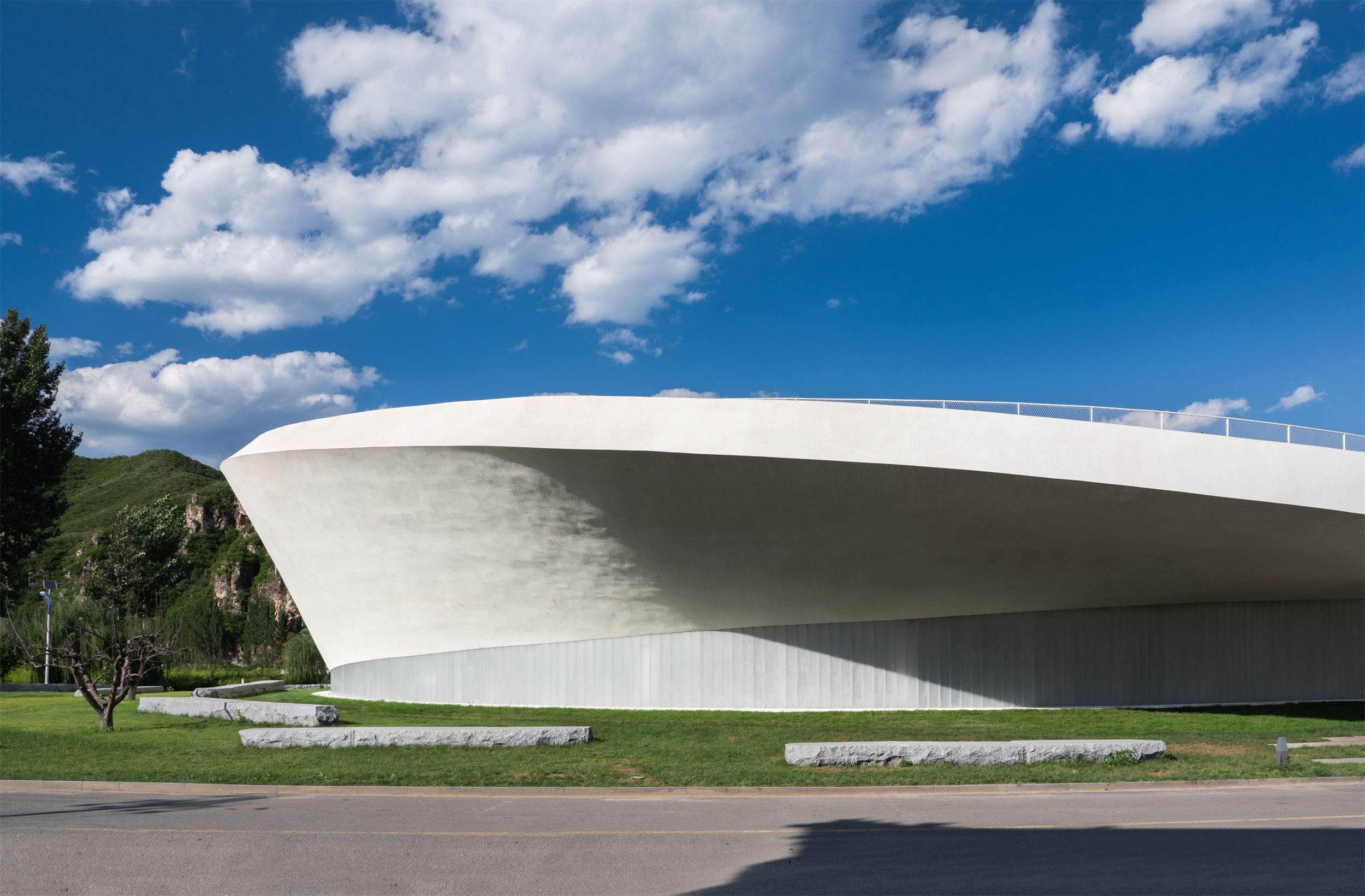
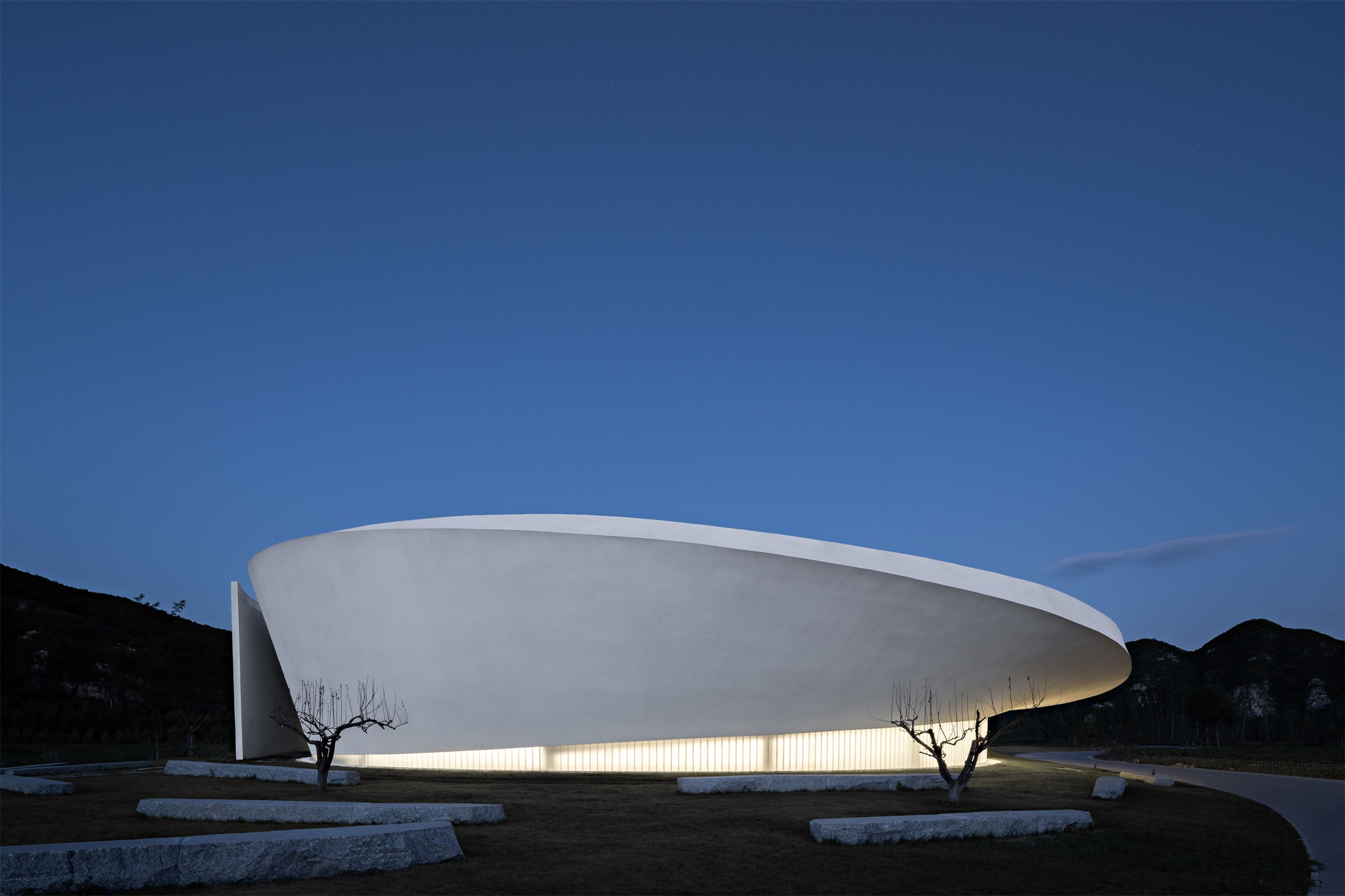

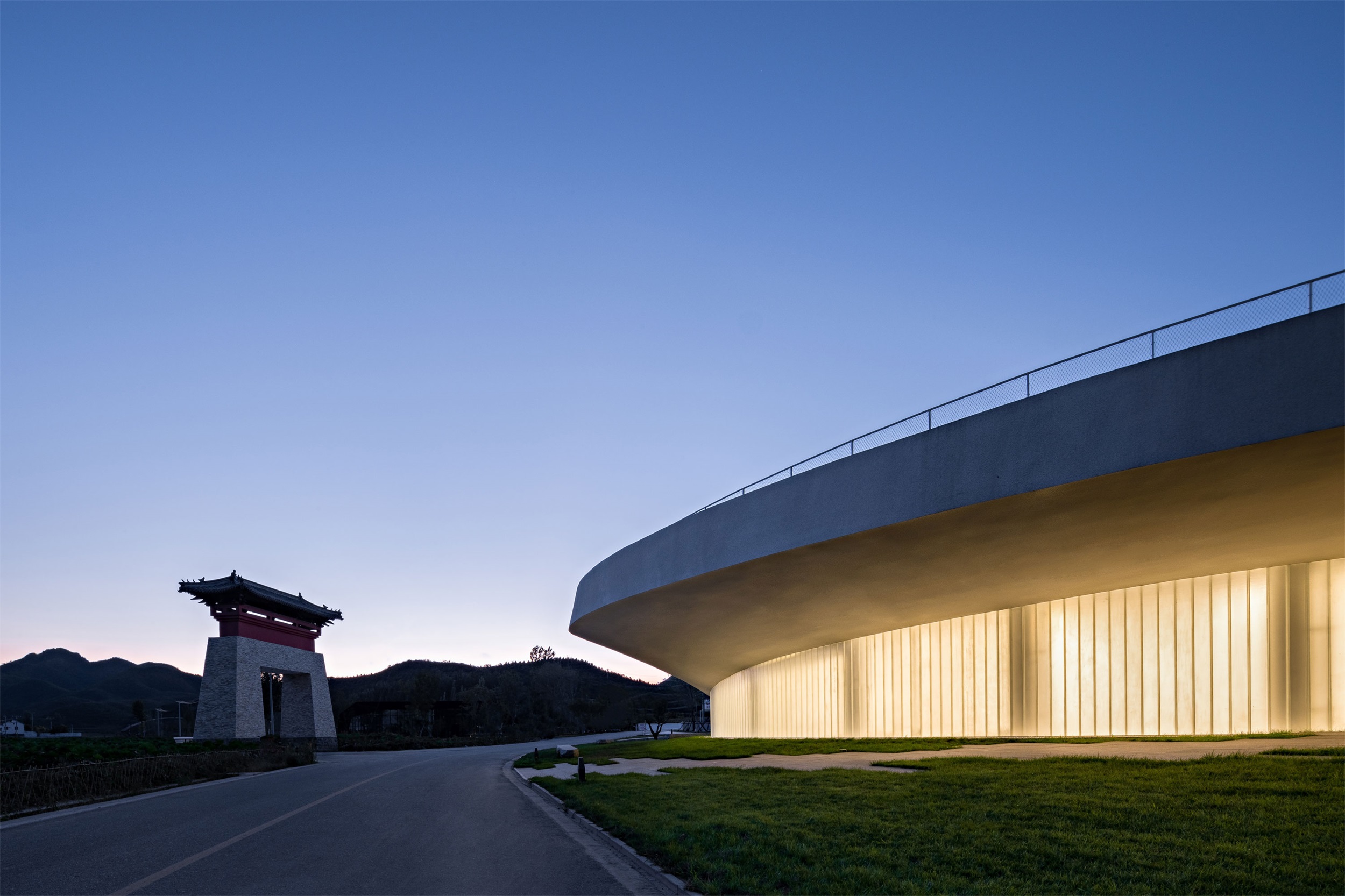

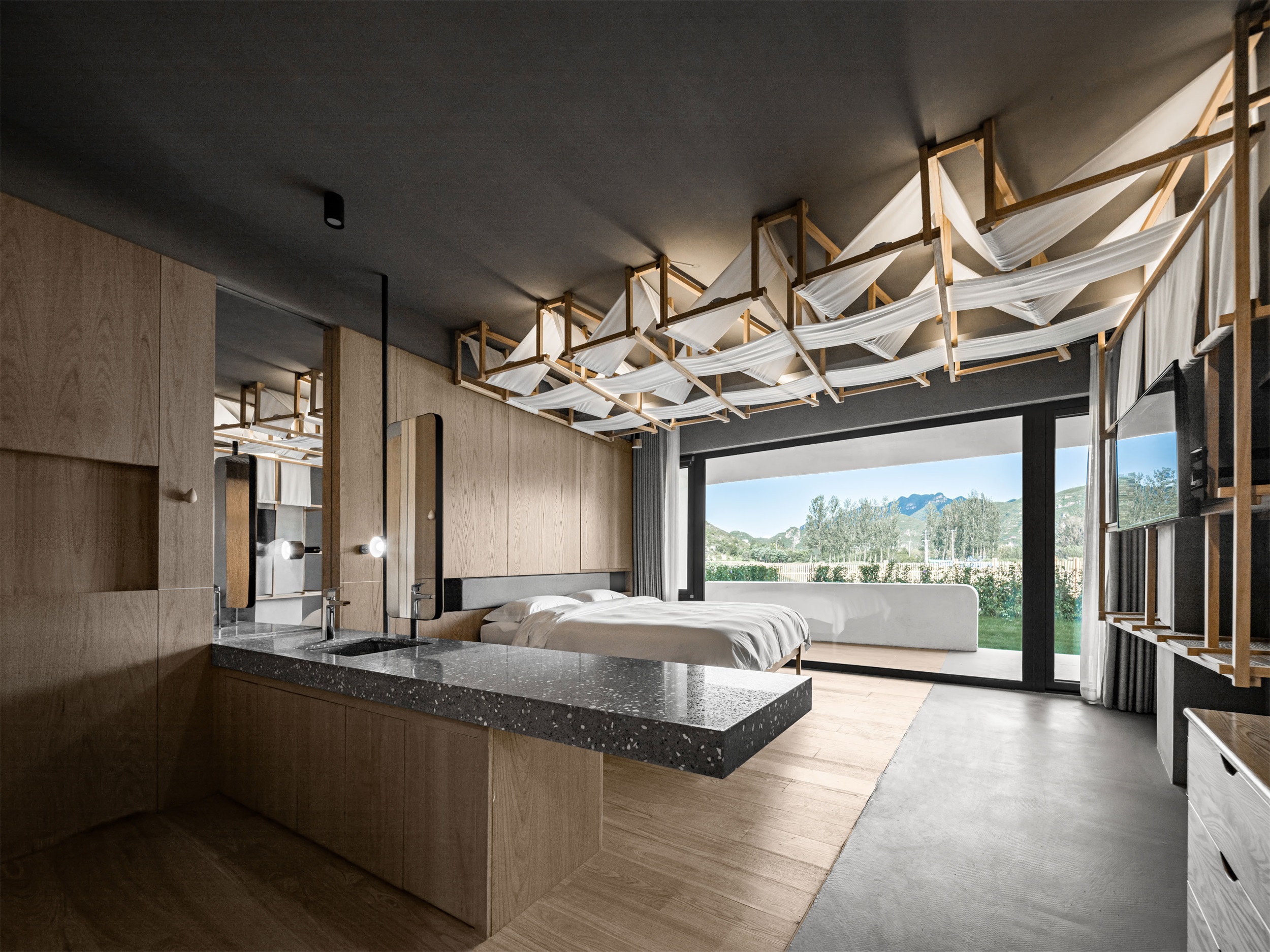
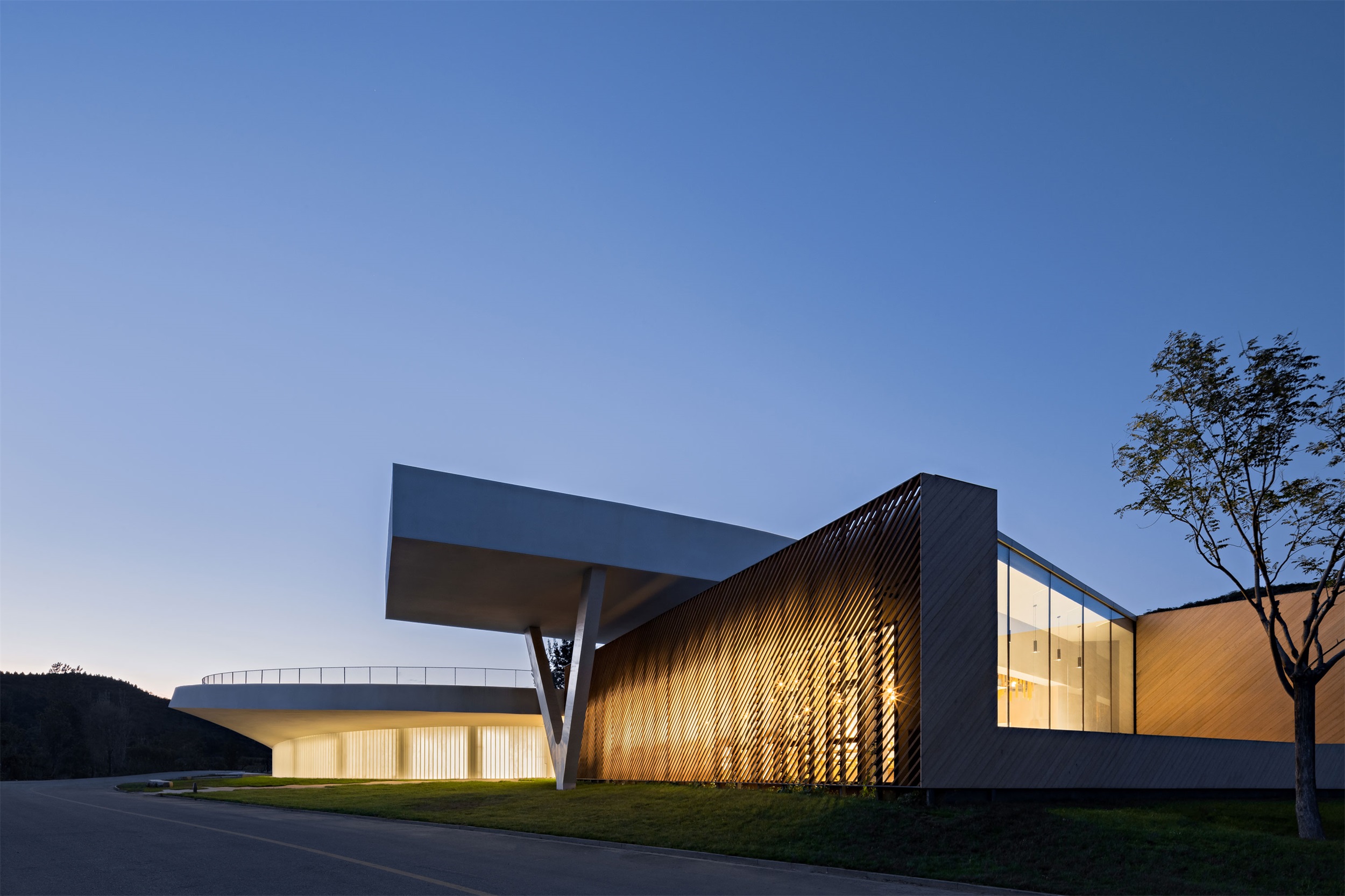

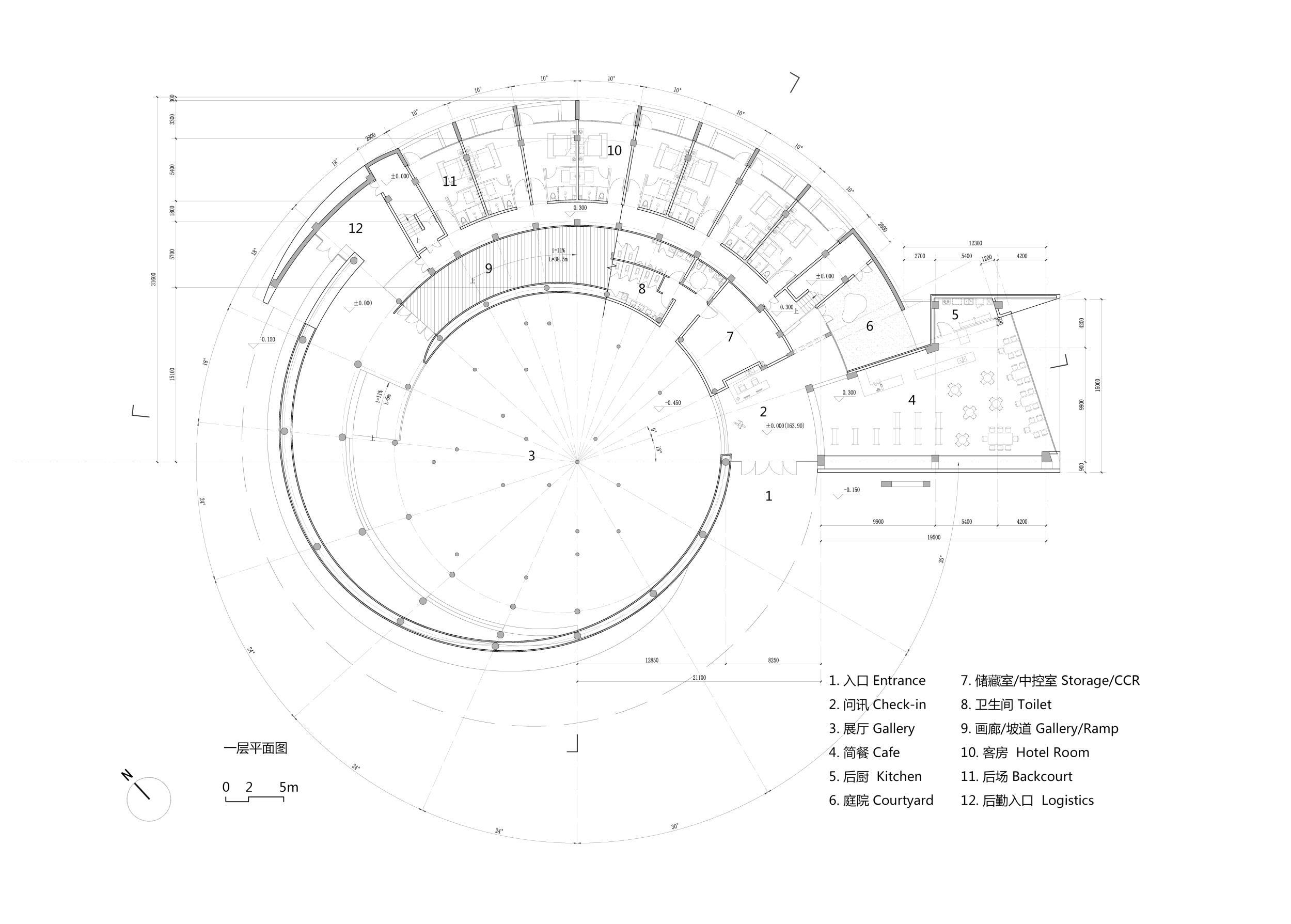



0 Comments